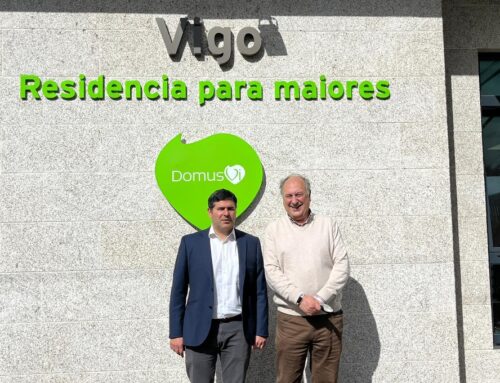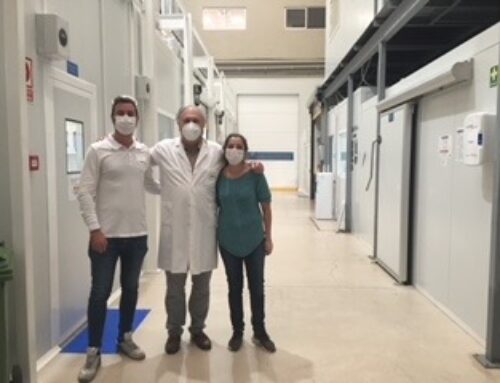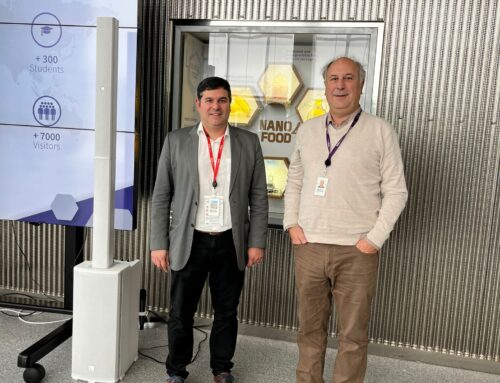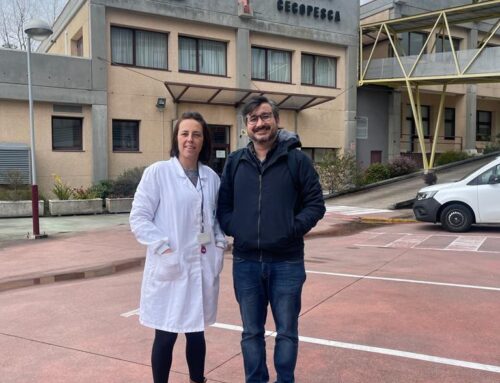Alistair House from A&r House Ltd to CSIC btw 26/10/2022-02/12/2022 and 13/03/2023-30/03/2023
Alistair House from A&R House (BCL) Ltd, UK, was seconded to CSIC, Spain, to investigate the optimisation of encapsulation methods, using a range of different shell materials and thicknesses so that time delay through the stomach into the intestine can be estimated carefully. Other work in WP3 was simultaneously investigating the absorption rates in the gut, which will inform the requirements of the shell material and its thickness.
The first trip involved meetings at CSIC (Paterna, Valencia office).

Fig 1: CSIC offices at Paterna, Valencia, Spain
I was introduced to the team, and we discussed the current status of all project elements. The availability of liquid samples was still delayed at customs at this stage, so testing was difficult for this work package.
Nevertheless, a strategy was developed which would see a minimal loss of trial time.
A tour of the establishment followed before more in-depth talks about the choices of shell materials for the encapsulation.
Other options, using electrospinning, were talked about, and experts spent time explaining the process in more detail and how they felt that limitations could be overridden.
The same day, laboratory staff ran an example trial run on a lab-scale electrospinning machine. This model ran using a single nozzle, and various runs were done using different nozzle pressures and platen distances, and a trial sample was generated for me. Voltages were also controlled to alter the ‘spray’ pattern.
Fig 2: Trial machine running a single nozzle
CSIC are specialists in post-harvest technologies and coordinate these aspects for the Spanish Government. CSIC officers work in close association with commercial firms and with university spin-outs, including secondments.
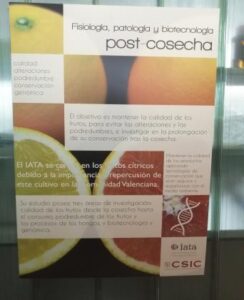
Fig 3: Posters of Current Projects
Trips were made to the spin-out ‘Bionicia’, which are partners in the Fodiac project. This firm also produces and operates pilot machinery and full-scale machinery from two other sites.
Visits were made to these two sites, and introductions were made to staff at those other sites. One machine is manufactured by Fluidnatec, a subsidiary/partner of Bionicia.

Fig 4: BioniciaHeadquarters

Fig 5: Experimental single-nozzle electrospray
The tour followed onto other sites where full-scale production was possible. Production had been paused for maintenance work, but this meant that service operatives could meet and discuss the workings of the multi-nozzle version of the electrospinning device.

Fig 6: Multi-nozzle electrosprayer
The second part of the secondment in the spring of 2023 began again with a visit to CSIC Paterna and further meetings hosted by Dr Cristina Prieto. The discussions again started with the latest update on the trial materials at Anfaco, which had been disseminated with multiple project partners by then. The project team for WP3 had decided that the trials (WP5) would continue at two different phases with diluted extract (but not microencapsulated due to lack of time). The second meeting included training sessions with other lab staff, who demonstrated further test runs of sample material.
I would like to thank Cristina Prieto, Nuria Mas Font, Emma Talon, and Fernando Gil, as well as the CSIC and Bionicia staff, for their time and patience during my two stays with them. I thank them for their time spent training me to use these advanced technologies and for answering all my questions!
This was a very useful experience, and the secondments will likely lead to further experimental work between these establishments- Thank you.






